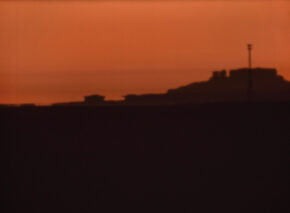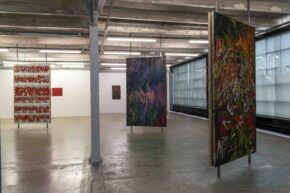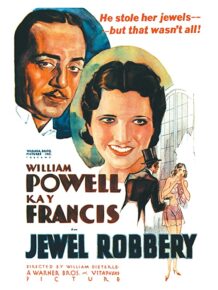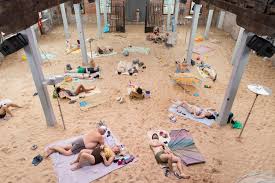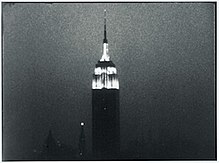Film – Art
Out of Time: The Videos of Tulapop Saenjaroen
By Jesse Cumming | 01/18/2024 | Columns, CS97, Film - Art, From Cinema Scope Magazine
Few contemporary artists feel as attuned to late capitalism—and its insidious means of extracting both our time and resources—as Saenjaroen, whose works offer means of escape from or refutation of these forces.
Read More → Film/Art | Another Space of Reference: The Performances and Videos of Ulysses Jenkins
By Jesse Cumming | 06/20/2023 | Columns, CS95, Film - Art, From Cinema Scope Magazine
“The content of my videotape involves documentary subject matter. The visuals combined with music are the attempt to create the mood of the community…in certain sequences light reflections create forms in space.”
—Ulysses Jenkins, “Comment on Video Tape” (1977)
Read More → Film/Art | Evidence Visible from a Distance: Tacita Dean on Fata Morgana
By Antoine Thirion | 09/26/2022 | Books, Columns, CS92, Film - Art, Interviews
In The Green Ray (2001), British artist Tacita Dean famously managed to capture on 16mm film the fleeting light that the sun leaves behind right at the moment when it disappears from the horizon. And, because a digital camera used by others at the same time, on the same beach, was unable to capture it, her film proves two things: one, that the green ray, despite being missed by almost all who try and see it, is not a legend; two, that only film can capture it. But the evidence is elusive, as Éric Rohmer found out while shooting Le rayon vert (1986), eventual
Read More → Film/Art | Out of the Blue and Into the Black: Derek Jarman’s Dead Souls Whisper
By Andrea Picard | 03/21/2022 | Columns, CS90, Film - Art, From Cinema Scope Magazine
Undoubtedly, the most referenced colour in the history of art has been the colour blue; it is perhaps also the most magnificent. From its invention by the ancient Egyptians, to the painted parchment in medieval Psalters, through Renaissance brocades and vast perspectival grids defined by winsome skies to those manufactured by James Turrell via artificial light or real ones enhanced and framed like sculptures, blue has the undeniable lure and power of a paradoxical emotion: to excite yet appease.
Read More → Film/Art | Musique concrète: Lucy Raven at Dia
By Phil Coldiron | 01/04/2022 | CS89, Film - Art, From Cinema Scope Magazine
We begin in the air, a weightless gaze toward a mountained horizon. After some seconds, the camera descends, dropping beneath ground level, replacing the sky with a sheer face of pale earth. It settles, establishing a new ground. This movement is typical of Lucy Raven’s frequently drone-based camera throughout Ready Mix, the single-channel video which comprises the core of her presentation at the Dia Art Foundation’s newly renovated Chelsea location.
Read More → Global Discoveries on DVD: Deliveries of Smart Dialogue by Dieterle and Others
By Jonathan Rosenbaum | 01/04/2022 | CS89, DVD Reviews, Film - Art, From Cinema Scope Magazine
fantasies by William Dieterle that I’ve seen is how literary they are. This adjective often has negative connotations in this North American neck of the woods, apparently because “literary” and “cinematic” are supposed to be antithetical—though clearly not for Orson Welles, nor for Godard, who devoted his first piece of film criticism to defending Joseph L. Mankiewicz, and virtually ended his 2 x 50 Years of French Cinema (1995) with his appreciative survey of literary texts that (for him) were an essential part of cinema, “from Diderot to Daney.”
Read More → Film/Art | The People United Will Never Be Defeated: Igor Levit’s Hauskonzerts
By Shelly Kraicer | 06/23/2020 | Columns, CS83, Film - Art, From Cinema Scope Magazine
One usually looks to art galleries and film festivals for a sense of what’s on the avant-garde edge of sound-and-image art. For these pandemic-laden months, with galleries and cinemas shuttered, something extraordinary is happening in the most tradition-bound art, Western classical music—or Western art music, as I prefer to call it. It’s not just Levit, though he stands at the head of an astonishingly vital set of online streaming sessions. Events like Bang on a Can Marathon, Music Never Sleeps, and performers as disparate as the Berlin Philharmonic, veteran pianist Angela Hewitt, and young pianist Tiffany Poon are inventing pathways to experience, communally and distanced. All from an art form that has been declared dead long before the “death of cinema” became a thing.
Read More → Film/Art | Curses and Blessings: Moving Images at the 58th Venice Biennale
By Erika Balsom | 06/27/2019 | Columns, CS79, Film - Art, From Cinema Scope Magazine
By Erika Balsom I wouldn’t wish living in times like these on anyone. This, of course, is the irony of the title of Ralph Rugoff’s exhibition for this year’s Venice Biennale, “May You Live in Interesting Times.” On the surface, the phrase reads as a blessing; actually, it is a curse. Add to this the…
Read More → Film/Art | Manhattan Style: Andy Warhol’s Empire
By Phil Coldiron | 03/26/2019 | Columns, CS78, Film - Art, From Cinema Scope Magazine
From A to B and Back Again. Given that “A” is “Andy,” what might count as a suitable “B”? In the context of the book of Warhol’s “philosophy” bearing that subtitle, it was literal: the Factory superstar Brigid Berlin and Interview magazine editor Bob Colacello, the other halves of the conversations which provided much of the book’s raw material.
Read More → 


